Understanding the Different Parts of a Tree
Introduction:
Trees are among the most important living organisms on Earth, offering shelter, food, and oxygen to countless species, including humans. These majestic plants serve as the backbone of many ecosystems, sequestering carbon and supporting biodiversity. While trees may appear simple in structure at first glance, they are highly complex organisms. Each part of a tree has a specific role that contributes to the overall health and function of the tree. Understanding these parts and their functions helps us appreciate the intricate balance trees maintain to thrive and survive.
In this article, we will explore the various parts of a tree, including roots, trunk, branches, leaves, flowers, fruits, and seeds. Additionally, we’ll delve into the tree’s internal structure, such as the cambium, xylem, and phloem, which facilitate nutrient and water transportation. By comprehending the parts and their purposes, we can gain a holistic view of a tree’s lifecycle, its role in the environment, and its importance in global ecological systems.
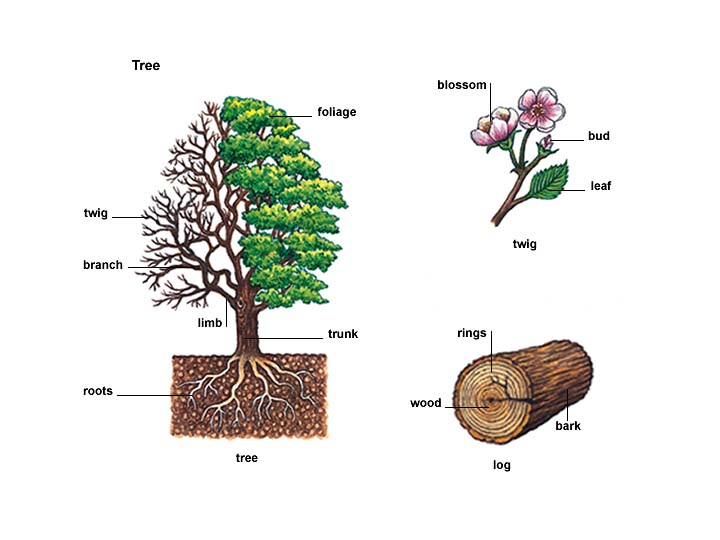
1. Roots: The Foundation of the Tree
The roots of a tree are often hidden from view, but they are crucial to the tree’s survival. Roots perform several critical functions, including anchoring the tree to the ground, absorbing water and nutrients from the soil, and storing energy in the form of carbohydrates. There are two main types of roots:
- Taproots: Some trees, like oaks, have a dominant taproot that grows vertically downward. Taproots extend deep into the soil, providing stability and access to deep water sources.
- Fibrous roots: In contrast, trees like maples have a fibrous root system, which consists of many smaller roots that spread out horizontally. This type of root system helps prevent soil erosion and allows the tree to access nutrients closer to the surface.
Roots are also home to important symbiotic relationships with fungi, known as mycorrhizae. These fungi help the tree absorb water and nutrients, particularly phosphorus, in exchange for carbohydrates produced through photosynthesis. Without a healthy root system, a tree cannot thrive, as it will struggle to access the necessary nutrients and water required for growth.
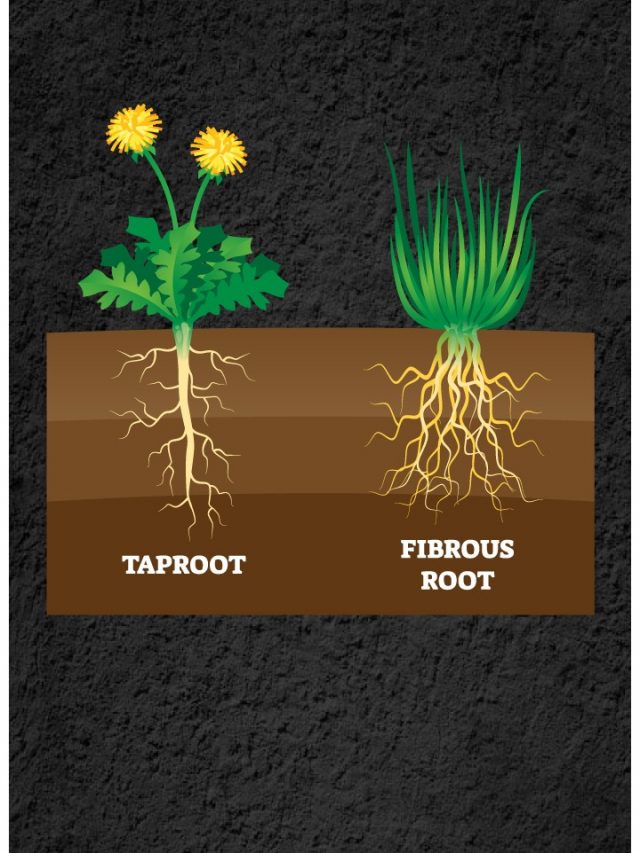
2. The Trunk: Structural Support and Transportation
The trunk of a tree is its central stem, which connects the roots to the leaves, branches, and other above-ground parts. It is the most prominent and recognizable part of most trees and serves two primary purposes:
- Structural Support: The trunk provides the tree with the support it needs to stand tall and withstand environmental forces, such as wind, rain, and gravity.
- Transportation: The trunk houses a complex system of tissues that transport water, nutrients, and sugars throughout the tree.
The trunk is made up of several layers, each with its own function:
- Bark: The outermost layer of the trunk, the bark, serves as the tree’s protective shield against physical damage, pests, diseases, and environmental conditions. The bark consists of dead cells that create a tough, insulating barrier. Trees like pines and birches have thick bark, which helps them survive fires, while other species have thin, delicate bark that can be easily damaged.
- Cambium: Beneath the bark lies the cambium, a thin layer of actively dividing cells responsible for the tree’s growth in diameter. As the tree grows, the cambium produces new layers of xylem and phloem, which allow the tree to transport nutrients and water more efficiently.
- Xylem (Sapwood): The xylem, also known as sapwood, is responsible for transporting water and dissolved minerals from the roots to the leaves. This process, known as transpiration, occurs when water evaporates from the leaves, creating a vacuum that pulls water upward through the xylem vessels. As the xylem ages, it becomes heartwood, which adds structural support to the tree.
- Phloem: The phloem, located just outside the cambium, transports sugars produced by photosynthesis in the leaves to other parts of the tree, such as the roots, fruits, and seeds. This process, called translocation, ensures that the entire tree receives the energy it needs for growth and reproduction.
- Heartwood: As xylem cells age and die, they become part of the heartwood, the innermost, non-living portion of the trunk. Heartwood provides structural support and acts as a reservoir for chemicals that protect the tree from decay and pests.
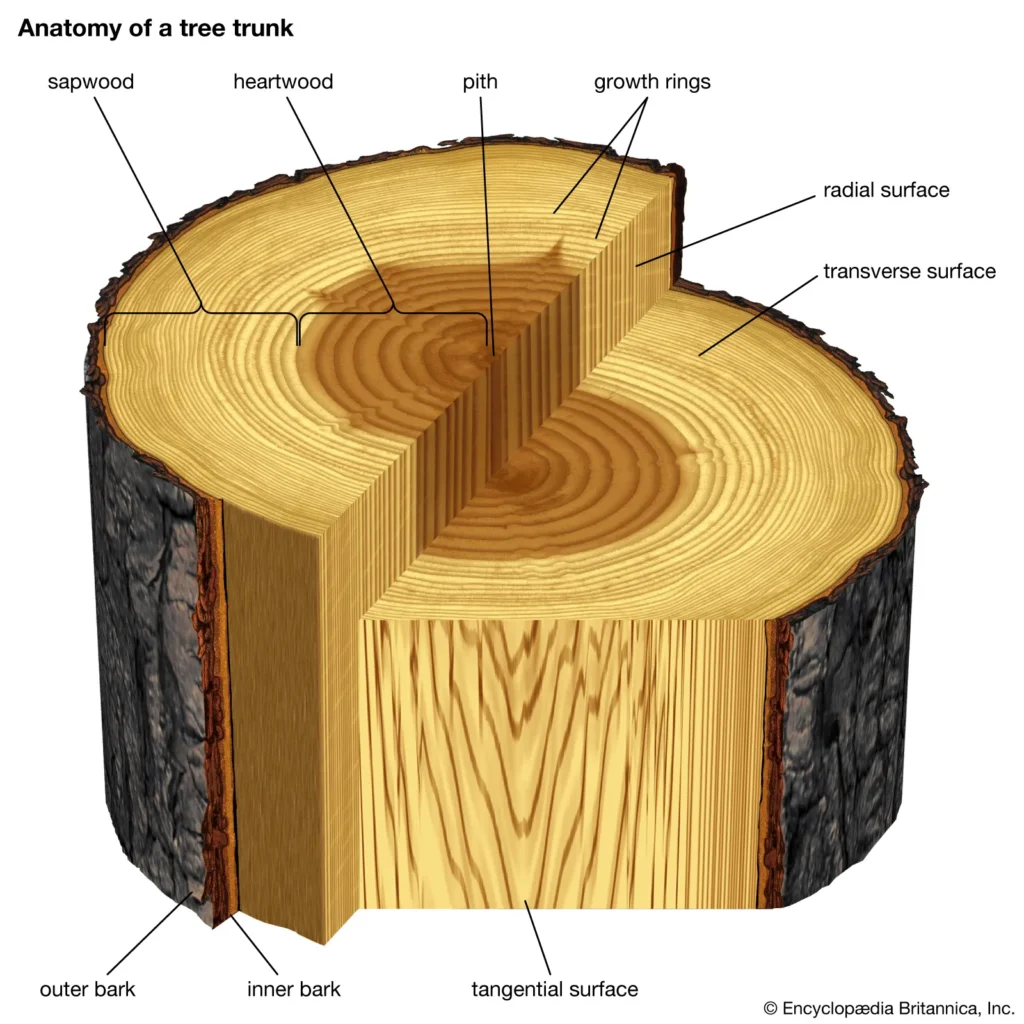
3. Branches and Twigs: The Framework of the Tree
Branches and twigs are extensions of the trunk, providing a framework to support leaves, flowers, and fruits. They also play a critical role in determining the shape and structure of a tree. Branches contain the same layers of tissue found in the trunk, including bark, cambium, xylem, and phloem.
Branches are essential for the distribution of leaves, which are the tree’s primary site of photosynthesis. The arrangement of branches, known as the tree’s crown, can influence the amount of sunlight that reaches the leaves. Trees with wide, spreading crowns, like oaks, can capture more sunlight, while those with tall, narrow crowns, like pines, are better suited to compete in dense forests.
Twigs are the smallest branches of a tree, and they are often where new growth occurs. Twigs bear buds, which contain the potential for new leaves, flowers, or branches to emerge. The arrangement of buds and twigs helps trees adapt to changing environmental conditions, such as light availability and temperature.
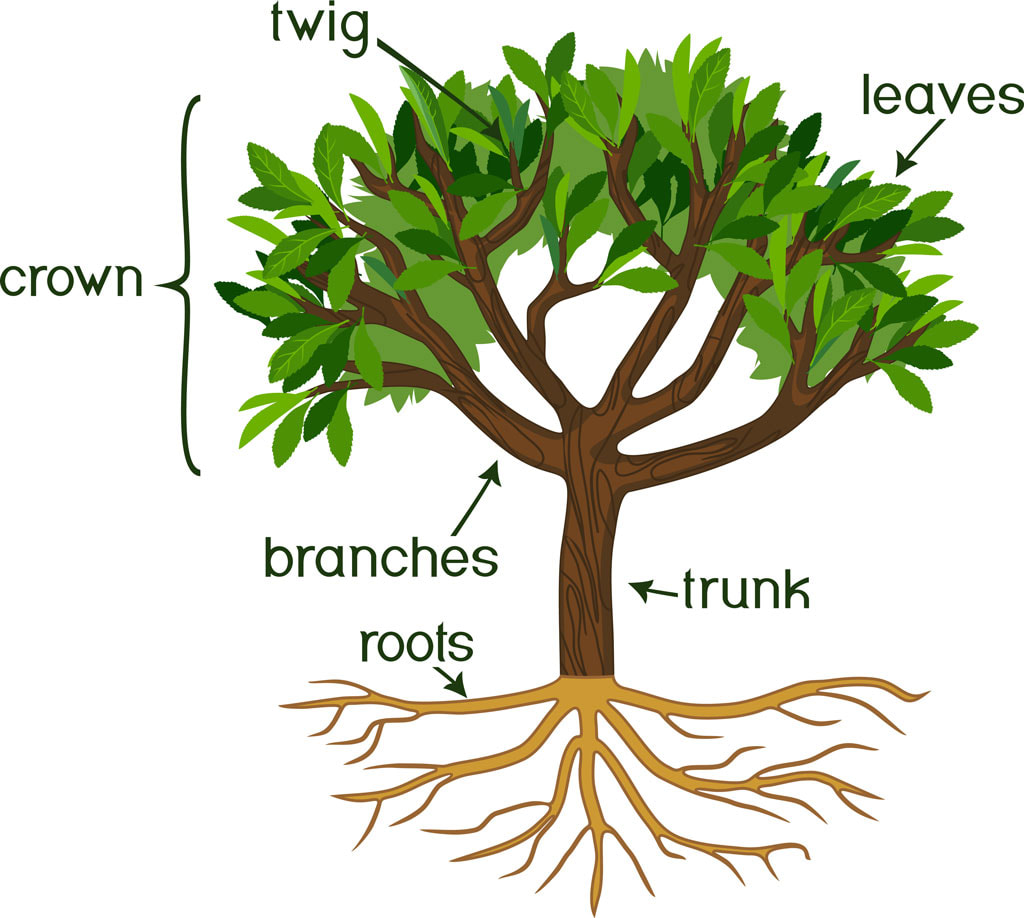
4. Leaves: The Photosynthetic Powerhouses
Leaves are often considered the most vital part of a tree, as they are responsible for photosynthesis—the process by which trees convert sunlight into energy. Leaves vary widely in shape, size, and arrangement, but they all share a common structure that enables them to carry out their function efficiently. The anatomy of a typical leaf includes:
- Blade: The flat, broad part of the leaf that captures sunlight. The surface of the blade is covered with tiny pores called stomata, which regulate gas exchange and water loss. Carbon dioxide enters the leaf through the stomata, and oxygen, a byproduct of photosynthesis, exits.
- Petiole: The stalk that attaches the leaf to the branch or twig. The petiole allows water and nutrients to flow between the leaf and the rest of the tree.
- Veins: The vascular tissues that run through the leaf, transporting water, nutrients, and sugars. The xylem carries water from the roots to the leaf, while the phloem transports sugars produced during photosynthesis to other parts of the tree.
Leaves come in a variety of shapes and sizes, from the needle-like leaves of conifers to the broad, flat leaves of deciduous trees. The shape of a tree’s leaves often reflects its environment; for example, conifers have narrow needles that reduce water loss, making them well-suited to cold or dry climates. In contrast, broadleaved trees, like maples and oaks, have large leaves that capture as much sunlight as possible, making them more efficient in temperate or tropical climates.
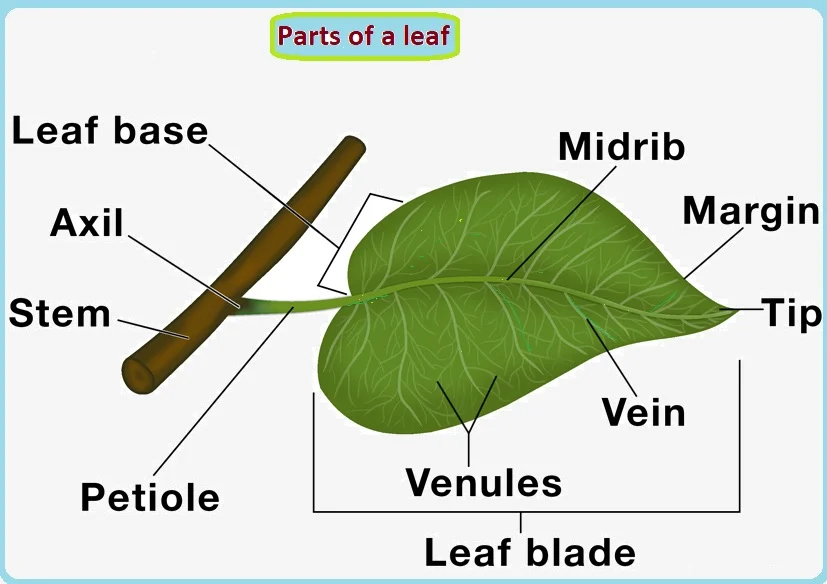
5. Flowers: The Reproductive Organs
Flowers are the reproductive structures of a tree, designed to attract pollinators, such as insects, birds, or wind, to help the tree reproduce. Not all trees produce flowers, but for those that do, the flowers are critical for the development of seeds and fruit.
A typical flower consists of several key parts:
- Petals: The colorful, often fragrant part of the flower that attracts pollinators. Petals are not essential to the reproduction process, but they play a significant role in ensuring the flower is pollinated.
- Sepals: The green, leaf-like structures that protect the developing flower bud.
- Stamens: The male reproductive organs, consisting of a filament and an anther. The anther produces pollen, which contains the male reproductive cells.
- Pistil: The female reproductive organ, made up of the stigma, style, and ovary. The stigma is the sticky surface where pollen lands, while the ovary contains the ovules, which will develop into seeds after fertilization.
Once pollination occurs, the ovules within the ovary are fertilized, leading to the development of seeds. In many trees, flowers give way to fruits, which serve as a protective container for the seeds.
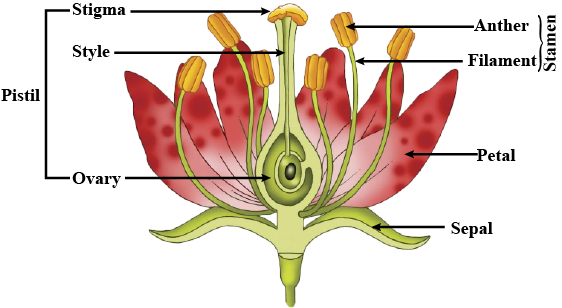
6. Fruits and Seeds: The Next Generation
Fruits are the mature ovaries of flowers and contain seeds, which are the next generation of trees. In addition to protecting the seeds, fruits often aid in their dispersal. Trees have developed a wide range of strategies for seed dispersal, including wind, water, animals, and gravity.
- Fleshy Fruits: Many trees, such as apple and cherry trees, produce fleshy fruits that are eaten by animals. The seeds are then dispersed through the animal’s digestive system, often far from the parent tree.
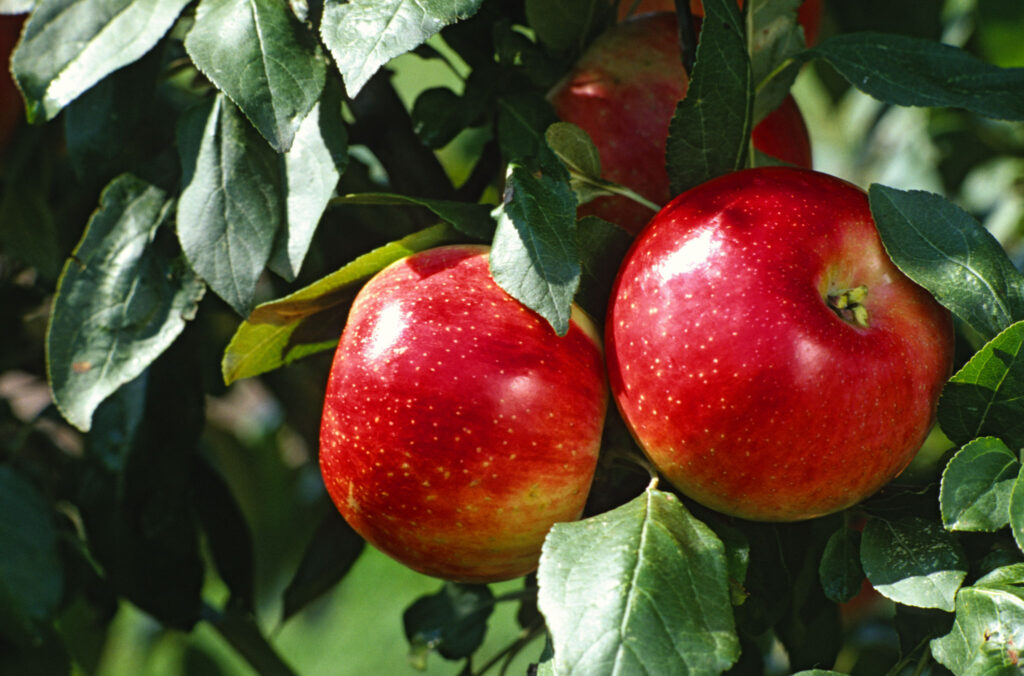
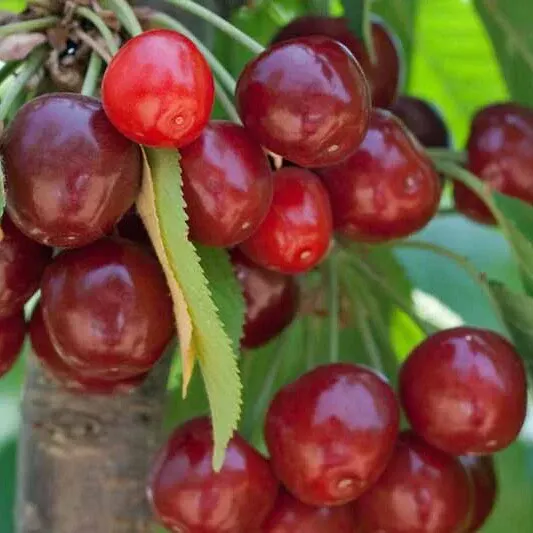
- Dry Fruits: Other trees, such as oaks and maples, produce dry fruits that rely on wind or gravity to disperse their seeds. For example, maple trees have winged seeds, known as samaras, that spin as they fall, allowing them to be carried by the wind to new locations.
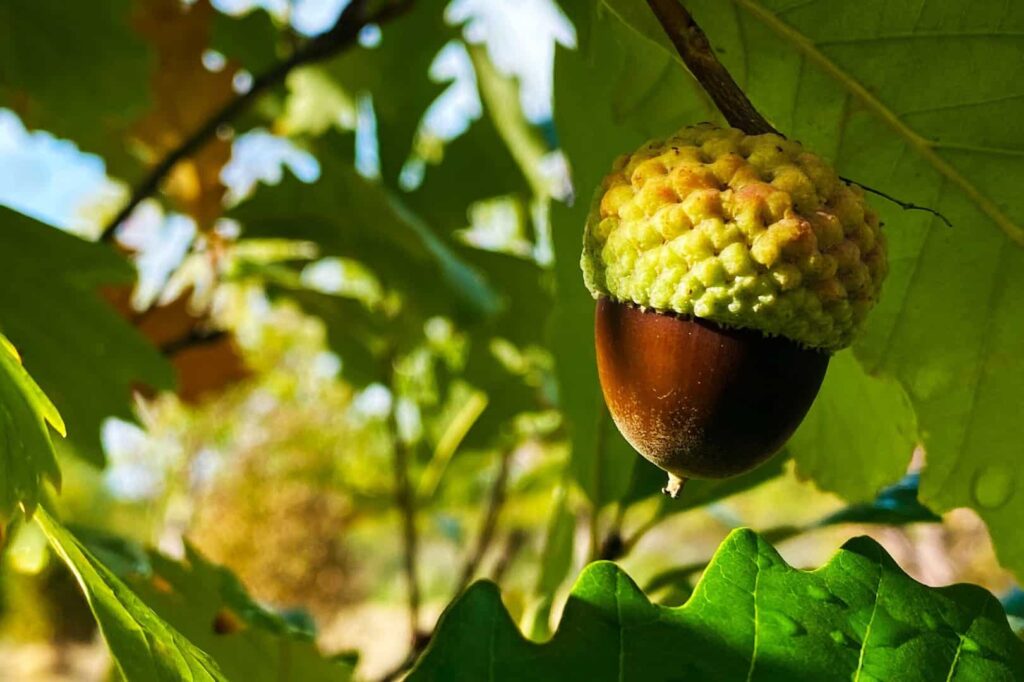

- Cones: Conifers, such as pines and spruces, produce seeds in cones rather than fruits. The seeds are often released when the cone dries out, allowing the wind to carry them to new areas.

7. The Importance of Trees in Ecosystems
Each part of a tree plays a vital role in the tree’s survival and in maintaining the balance of the ecosystem. Trees provide shelter and food for countless species, from birds and insects to mammals and fungi. They also contribute to soil health by preventing erosion, cycling nutrients, and supporting symbiotic relationships with other organisms.
In addition to their ecological benefits, trees play a crucial role in regulating the climate. Through photosynthesis, trees absorb carbon dioxide from the atmosphere and release oxygen, helping to mitigate the effects of climate change. Forests, in particular, act as carbon sinks, storing large amounts of carbon in their biomass and soils.
Conclusion
Understanding the different parts of a tree is essential for appreciating the complex processes that allow trees to grow, reproduce, and thrive in a wide range of environments. From the roots that anchor the tree and absorb nutrients, to the leaves that harness the sun’s energy, each part of a tree plays a vital role in its overall health and function. Trees are not only fundamental to their ecosystems but also to the survival of life on Earth. Protecting and preserving our forests and trees is crucial for maintaining biodiversity, combating climate change, and ensuring a sustainable future for generations to come.
3 thoughts on “Understanding the Different Parts of a Tree”
Awsome article and right to the point. I don’t know if this is really the best place to ask but do you people have any thoughts on where to get some professional writers? Thx 🙂
Hello there, You’ve done a great job. I’lldefinitely digg it and personally
recommenhd to my friends. I’m confident they’ll bbe benefited fromm
thus website. https://Evolution.Org.ua/
you are really a just right webmaster. The site loading speed is incredible. It kind of feels that you are doing any unique trick. Furthermore, The contents are masterpiece. you have performed a magnificent activity in this subject!